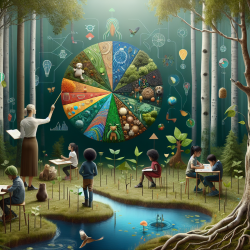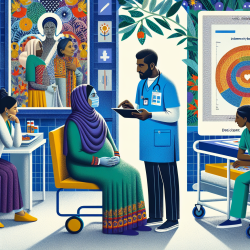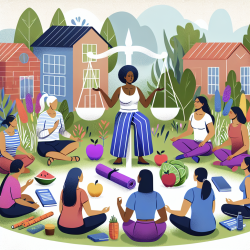Harnessing Creative Resistance: Building a Future for Our Children
In the realm of speech-language pathology, the drive to create optimal outcomes for children is paramount. This pursuit requires not only a strong foundation in evidence-based practices but also an openness to innovative approaches that may lie outside traditional frameworks. A fascinating exploration of such an approach can be found in the research article "Desire and the Law: Creative Resistance in the Reluctant Passenger and the Heart of Redness" by Jason D. Price. This research provides valuable insights into how creative resistance can be a powerful tool in fostering sustainable futures, not just for communities but for our children as well.
The Role of Creative Resistance
Price's research critiques the limitations of relying solely on legal frameworks to protect communities and environments. Instead, it highlights the potential of desire and creative resistance as alternative means to achieve these goals. This perspective is particularly relevant for practitioners in speech-language pathology who strive to create nurturing environments for children, where their voices and needs are heard and respected.
Implementing Creative Resistance in Practice
For practitioners, implementing the outcomes of this research involves embracing a mindset that values creative problem-solving and adaptability. Here are some practical steps to consider:
- Encourage Open Dialogue: Foster an environment where children feel comfortable expressing their thoughts and emotions. This can be achieved through activities that promote open communication and active listening.
- Embrace Cultural Diversity: Recognize and respect the diverse cultural backgrounds of the children you work with. Incorporate culturally relevant materials and practices into your sessions to create a more inclusive environment.
- Promote Collaboration: Work collaboratively with families, educators, and other professionals to develop holistic strategies that support the child's overall well-being.
- Innovate Beyond Traditional Methods: Be open to exploring new techniques and technologies that can enhance your practice. This might include incorporating digital tools or alternative communication methods.
Encouraging Further Research
While Price's research provides a compelling argument for the role of creative resistance, it also opens the door for further exploration. Practitioners are encouraged to engage in ongoing research and dialogue to continue evolving their practices. This can involve participating in professional development opportunities, collaborating on research projects, and sharing insights with peers.
By embracing creative resistance and continuously seeking new knowledge, practitioners can contribute to building a future where all children have the opportunity to thrive. To read the original research paper, please follow this link: Desire and the Law: Creative Resistance in the Reluctant Passenger and the Heart of Redness.










